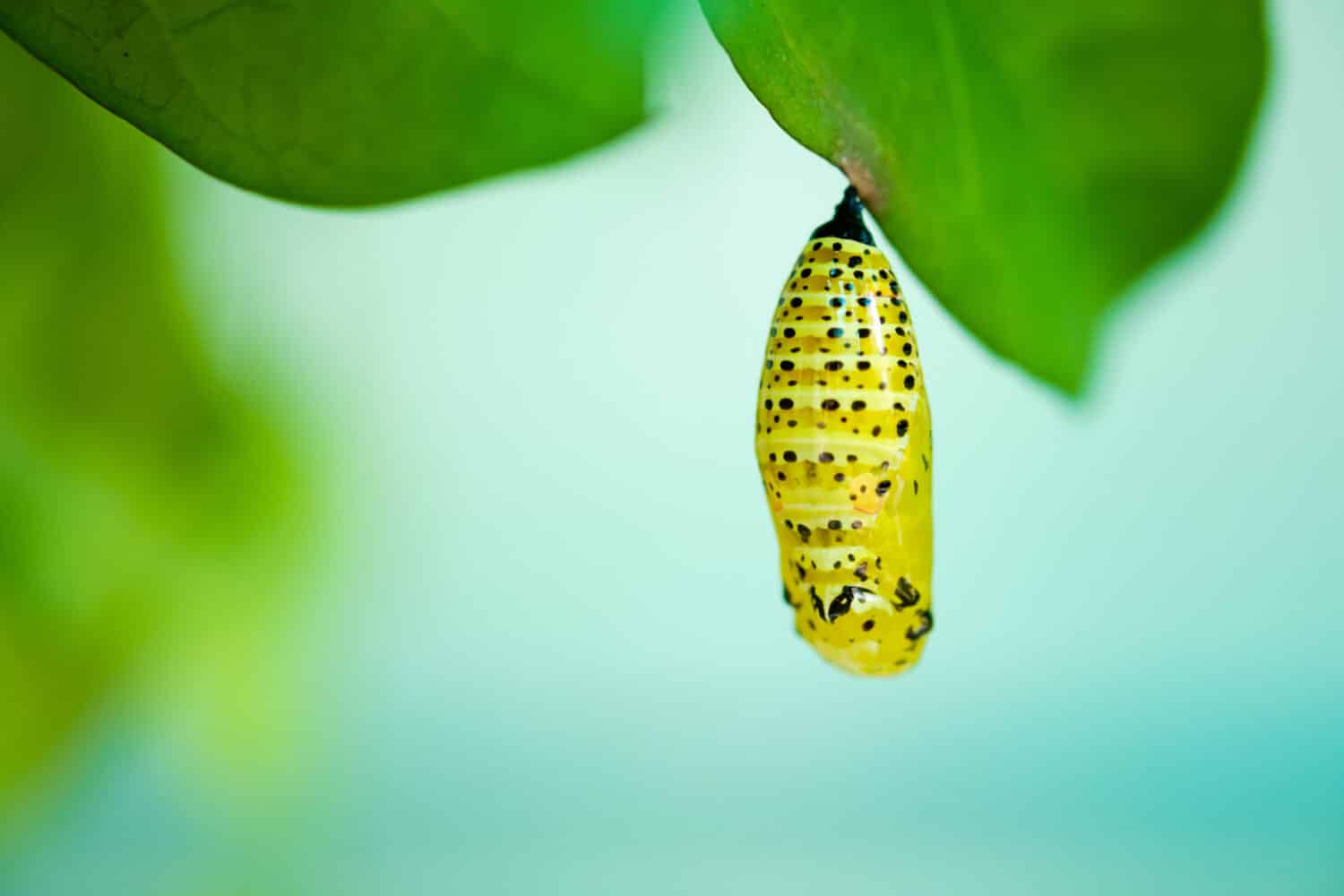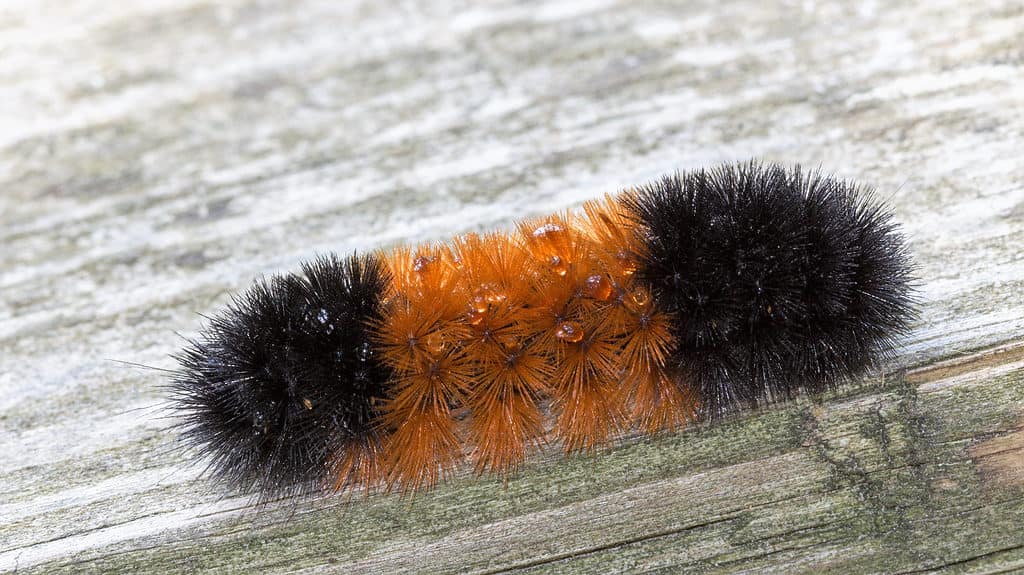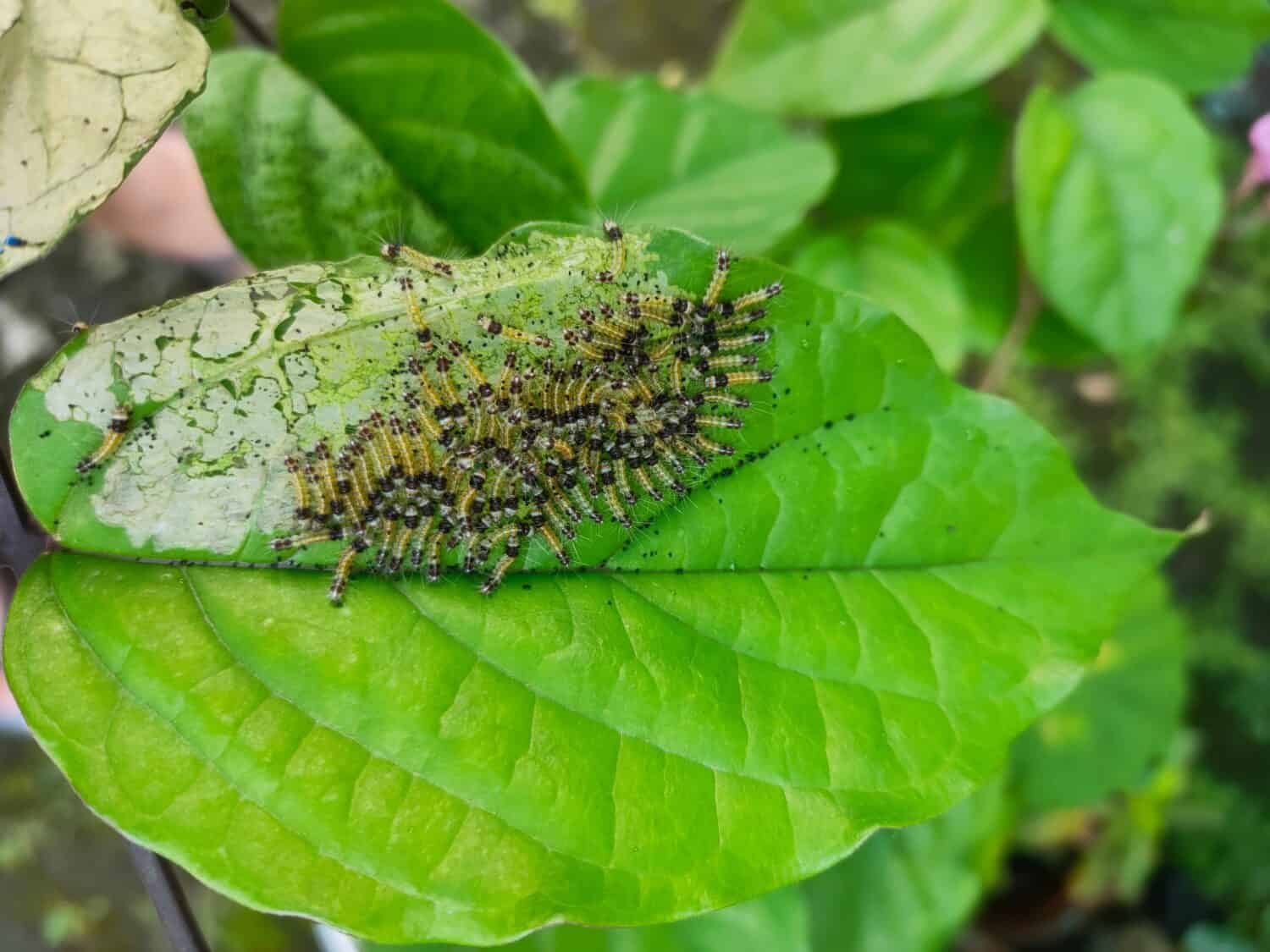Introduction
Butterflies can be found all over the world. These beautiful winged insects play a crucial role in pollinating and allowing plants to grow. In addition to their beauty and pollination benefits, butterflies have significant cultural meaning to different groups across the globe. Certain belief systems and religions associate butterflies with good luck, rebirth, love, and freedom. However, many people do not know that these insects did not start as butterflies. Every butterfly you see used to look extremely different. Before growing their beautiful wings, these fascinating creatures were caterpillars! Beginning with hatching from their eggs, butterfly larvae go through many stages, including being a caterpillar, before becoming beautiful insects. Although all butterflies were once caterpillars, some caterpillars do not grow to become butterflies. Keep reading to learn about the six types of caterpillars that do not turn into butterflies.
Caterpillars that Transform into Butterflies: Exploring the Metamorphosis Process

Every caterpillar goes through a multiple-step process called metamorphosis to become a butterfly or moth.
©Sundry Photography/Shutterstock.com
Many different types of caterpillars eventually transform into butterflies. This happens over a multiple-step process called metamorphosis. While the process varies in length in between different types of caterpillars, the fundamental milestones remain the same. Here is a step-by-step look at the metamorphosis process, and some of the most recognizable caterpillars that transform into butterflies.
The Egg Stage
The first stage in a butterfly’s metamorphosis is the egg stage. This stage begins with a female butterfly laying clusters of eggs on leaves. Female butterflies can lay anywhere between 200 to 500 eggs, ensuring that a large percentage of the population survives to adulthood. This stage typically lasts around a week on average.
The Larva Stage
After gestating for some time, the butterfly larva will hatch from the previously laid eggs. This is the stage where the butterfly is a caterpillar. The newly hatched larva looks like a very small caterpillar and will grow significantly over the rest of the stage. Young caterpillars eat the egg they hatch from first and then begin to feed on the leaf they were laid on. While the caterpillars eat and grow, they will shed their skin as they become too large for it. This process, called molting, happens more than once during the larva stage. Caterpillars grow an astonishing amount during this stage, reaching up to 1,000 times heavier than their weight when they hatched! All of this eating and growing is in preparation for the rest of the caterpillar’s metamorphosis, which typically continues a few weeks after the larva stage.
The Pupa Stage

The chrysalis is a protective shell that typically hangs from tree branches and blends in with its surroundings.
©MilletStudio/Shutterstock.com
After consuming enough food to grow to the desired size, the caterpillar will enter the next stage of metamorphosis. This stage called the pupa stage, is a fascinating one. The mature caterpillars will find a safe spot near the host plant and form a chrysalis. These protective shells typically hang from tree branches and blend in with their surroundings. While in the chrysalis, the caterpillar will go through an incredible transformation. Its body begins to secrete juices that break down its body on a cellular level. After the caterpillar’s body has been broken down, its cells begin rearranging to form wings, eyes, legs, and all the other components of a butterfly. Depending on the species, this stage can last anywhere from weeks to years.
The Adult Stage
At the end of the pupa stage, the adult stage begins. After fully transforming, the adult butterfly will break free from its chrysalis. They spend several hours after emerging waiting for their wings to dry so that they are light enough to take flight. When they are finally able to fly, the butterfly will begin searching for food and a mate to continue the life cycle. On average, an adult butterfly will live for around two weeks.
Distinguishable Types of Caterpillars

The monarch caterpillar is distinguished by its fat body and black coloring with yellow stripes.
©Cathy Keifer/Shutterstock.com
Some of the most common types of caterpillars can be found right in your backyard! These future butterflies come in all different patterns and sizes. For example, the monarch caterpillar is distinguished by its fat body and black coloring with yellow stripes. In contrast, the cabbage white caterpillar has a thin, smooth body with a uniform light green coloring throughout. The spicebush swallowtail caterpillar is identifiable by its green coloring and yellow dots that serve as false eyes on the top of its head.
Not All Caterpillars Become Butterflies
While all caterpillars are destined to transform, some do not turn into butterflies. This is because moths also begin as caterpillars, and have a very similar metamorphosis process. However, while caterpillars that turn into butterflies form a chrysalis, moth caterpillars spin a cocoon. The cocoon is a web of silk that the caterpillar secretes around itself to enter the pupa stage. During this stage, similar changes occur, but the vessel that they happen in is slightly different.

The woolly bear caterpillar is covered in black and orange spikes.
©Kimberly Boyles/Shutterstock.com
You are probably wondering what the difference between a moth and a butterfly is. While they seem similar, there are a few key differences. For one, butterflies are diurnal, meaning they are active during the day. However, moths are nocturnal, making them most active at night. In terms of appearance, moths typically have wider, furrier bodies with wings that stretch horizontally rather than vertically. They also tend to have more muted coloring than butterflies, and the presence of a frenulum that holds their wings together.
Types of Caterpillars That Become Moths
It may be hard to tell which caterpillar will become a butterfly and which will become a moth, but there are some noticeable differences. For one, moth caterpillars are often covered in furry spines that give their bodies a fuzzy appearance. One good example of this is the woolly bear caterpillar, which is covered in black and orange spikes. The rosy maple moth caterpillar has black spikes decorating its green body, which are absent in butterfly caterpillars. The curve-lined owlet moth caterpillar has the same dull coloring as many other moth caterpillars but with a twist. This specific caterpillar has a bent, distorted shape, designed to make it look like a dried leaf and protect it from predators.
Reasons Caterpillars Do Not Transform

Sometimes, caterpillars never make it past the larva stage.
©Stickystock/Shutterstock.com
While there are no species of caterpillars that are meant to stay in the larva stage forever, there are circumstances where the insects do not complete metamorphosis. Although rare, here are some different reasons why a caterpillar may not transform into a butterfly or moth.
Lack of Food
When there is a lack of food, a growing caterpillar will not receive the nutrients and calories it needs to reach the next stage of metamorphosis. This issue is often due to an overcrowding of larvae on a particular leaf, creating competition for adequate sustenance. The scarcity of food can lead to fighting and even cannibalism amongst the growing caterpillars.
Birth Defects
Most often due to inbreeding of some kind, caterpillars can hatch with significant birth defects. These conditions can manifest in several different ways, and are almost always fatal to the caterpillar, preventing it from entering the pupa stage.
Irregular Temperatures
When an environment is too warm, it can have a detrimental effect on caterpillars. Higher temperatures can trigger an increase in juvenile hormones that prevent caterpillars from progressing through metamorphosis. These temperatures can also upset the caterpillar’s circadian rhythms, disrupting its feeding process and preventing them from growing.
The photo featured at the top of this post is © IanRedding/Shutterstock.com
Thank you for reading! Have some feedback for us? Contact the AZ Animals editorial team.






